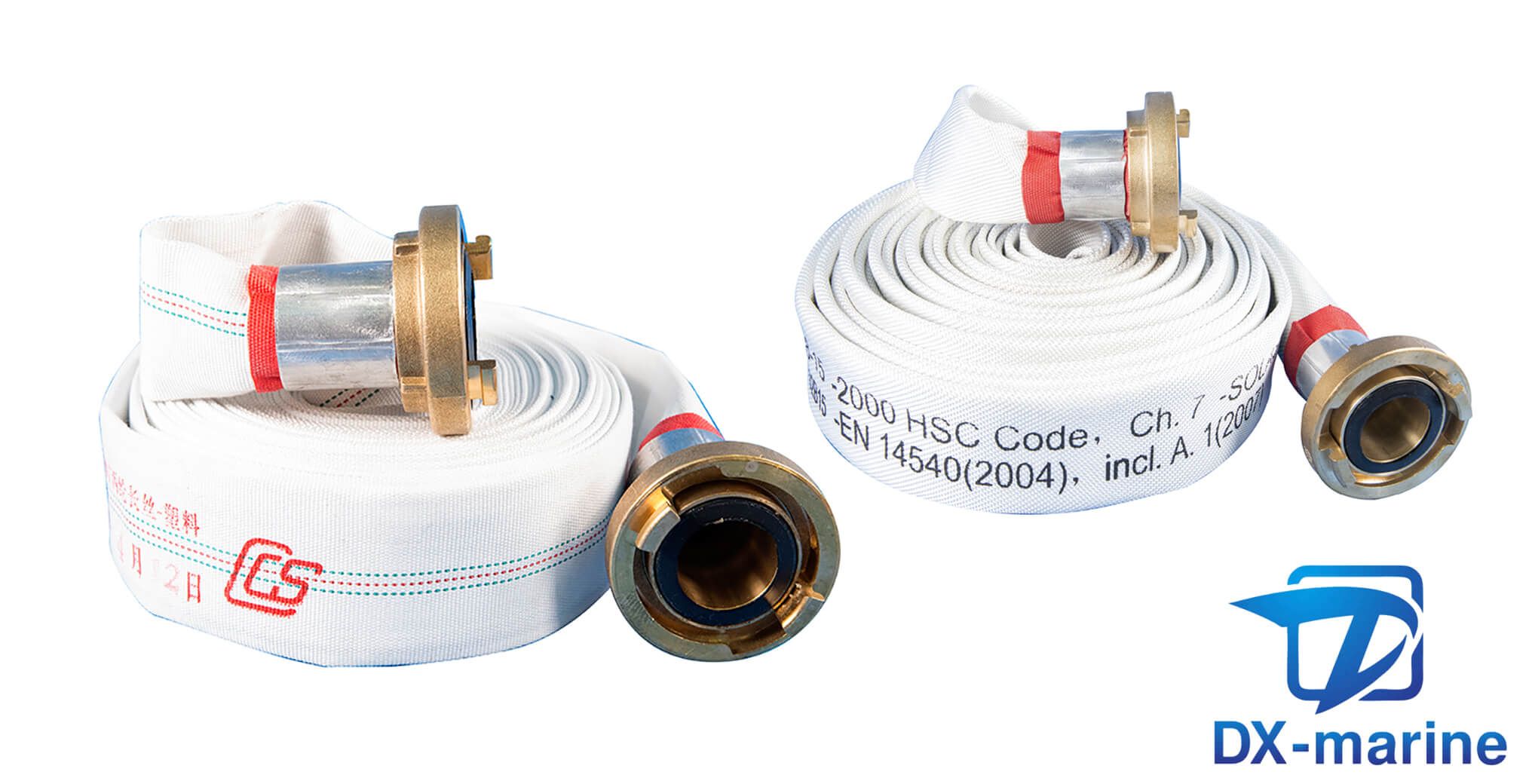D、Introduction
Standard Fire Hoses are constructed from woven polyester internally lined with a synthetic rubber to give a smooth, low friction bore. This type of hose may be polyurethane coated to provide additional abrasion resistance. Other higher quality hoses comprise an all synthetic woven textile reinforcement encased in a PVC/Nitrile rubber which forms a unified lining and outer cover.
E、Requirement
In passenger ships there should be at least one hose for each hydrant and these hoses shall be used only for fire fighting or fire fighting training. Cargo ships of over 1000 gross tonnes must have one hose for each 30m length of the vessel, plus one spare, but not less than five hoses (this number does not include any hoses that are required in the engine room or boiler room). In some cases the Authority may increase the number of hoses required The number of hoses required in vessels of less than 1000 gross tonnes will be determined by the Administration.
The permitted minimum length of hose is 10 metres and the maximum is:
-
not more than 15 metres for machinery spaces
-
not more than 20 metres for other spaces & open deck
-
not more than 25 metres for other spaces & open deck of ships with a maximum breadth of 30 metres.
F、Stowage
Hoses may be stowed rolled, Dutch rolled (i.e. rolled from the centre with both couplings accessible, or flaked.
G、Care
Hoses may chafe due to vibration, therefore they should be stowed with minimum contact with the locker interiors. Ideally their storage should be in dry, well ventilated conditions. They may also kink, especially adjacent to the hydrant. Careful leads should be made so that kinking, which reduces water flow, is avoided and the hose must be protected by being wrapped in rags or similar where it passes over sharp edges such as door sills, hatch coamings, etc. When avoidable do not drag charged hoses over rough surfaces.
Avoid subjecting hoses to sudden shock loads by opening valves and hydrants slowly. Similarly avoid sudden closure of nozzles. After contact with oils and grease and after use with foam hoses should be washed and flushed through.
Drain and wipe down before stowing. To drain the hose lay it flat along the deck and under-run" it at shoulder height.
If a hose is kept flaked the position of the folds should be shifted when restowing.
H、Pressure testing
Each hose assembly should be tested according to the manufacturers instructions. Typically this will be annually at
50%
above the working pressure. Damaged and suspect hoses must be removed from service until an efficient repair can be effected.

